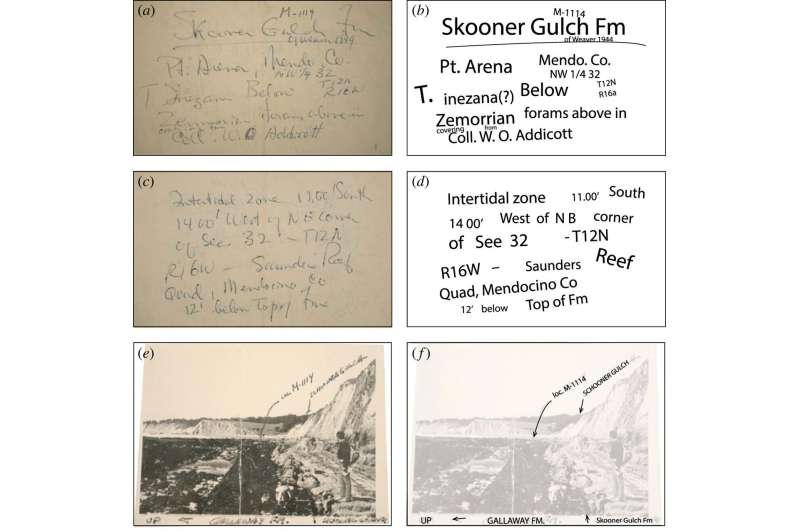June 20, 2023 report
This article has been reviewed according to Science X's editorial process and policies. Editors have highlighted the following attributes while ensuring the content's credibility:
fact-checked
peer-reviewed publication
trusted source
proofread
Tooth fossil found at Smithsonian turns out to be from ancient hippo-like creature
![Desmostylus sp. (USNM PAL 706595), lower molar (likely m2). Tooth in (a) lateral view; (b) lingual view; (c) ventral view; (d) occlusal view; (e) anterior and (f) posterior views. Abbreviations: cpl, cuspule; E, entoconid; EX, extra cusp; H, hypoconid; M, metaconid; P, protoconid; Y and Z, distal talonid (sensu Inuzuka et al. [5]). Credit: Royal Society Open Science (2023). DOI: 10.1098/rsos.221648 Tooth fossil found at Smithsonian turns out to be from ancient hippo-like creature](https://scx1.b-cdn.net/csz/news/800a/2023/tooth-fossil-found-at-1.jpg)
A pair of paleobiologists with the Smithsonian Institution's National Museum of Natural History has found evidence of a long extinct herbivore marine mammal living in what is now the Skooner Gulch Formation in northern California. In their paper published in the journal Royal Society Open Science, Kumiko Matsui and Nicholas Pyenson describe their study of an uncatalogued tooth they found among the Institution's massive collection and what they learned about it.
Prior research has shown that millions of years ago, a type of marine animal that somewhat resembles the modern hippopotamus lived along the shores of what is now the North Pacific. Known as Desmostylus, the creature belonged to the genus Desmostylia.
In this new effort, the research pair found a Desmostylus tooth that had been sitting unstudied in a drawer at the Institution since the 1960s.
Along with the tooth were some field notes describing how the specimen had been dug up at a site in the Schooner Gulch—a geological formation in northern California. The pair undertook a study of the tooth to learn more about its possible origins.

The work by the team involved measuring the tooth and noting its physical characteristics compared to others of its kind, and noting any differences. In so doing, they found features that were expected along with some that were so different that the research pair wondered if the tooth had come from a different species.
The tooth, a molar, was quite large, measuring 6.35 centimeters by 3.8 centimeters. It was also darker than expected as well as shiny and heavy. They also noted that it had six large cusps and that its enamel was extremely thick. Taken together, the characteristics of the tooth suggested very strongly that it was a Desmostylus. The researchers note that despite its appearance, the tooth features suggest the creature likely behaved more like a sea lion than a hippo—it probably ate seaweed and spent most of its time in shallow parts of the sea.
The characteristics of the tooth also suggested that it was older than most of the other specimens that have been found over the years, which further suggested it was likely between 22 and 23 million years old, putting it in the early part of the Miocene.
More information: Kumiko Matsui et al, New evidence for the antiquity of Desmostylus (Desmostylia) from the Skooner Gulch Formation of California, Royal Society Open Science (2023). DOI: 10.1098/rsos.221648
Journal information: Royal Society Open Science
© 2023 Science X Network




















